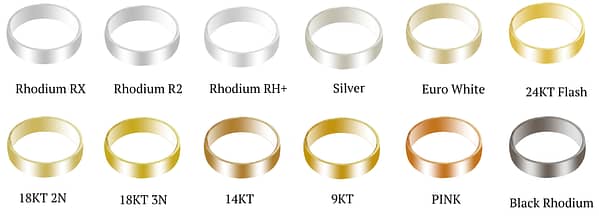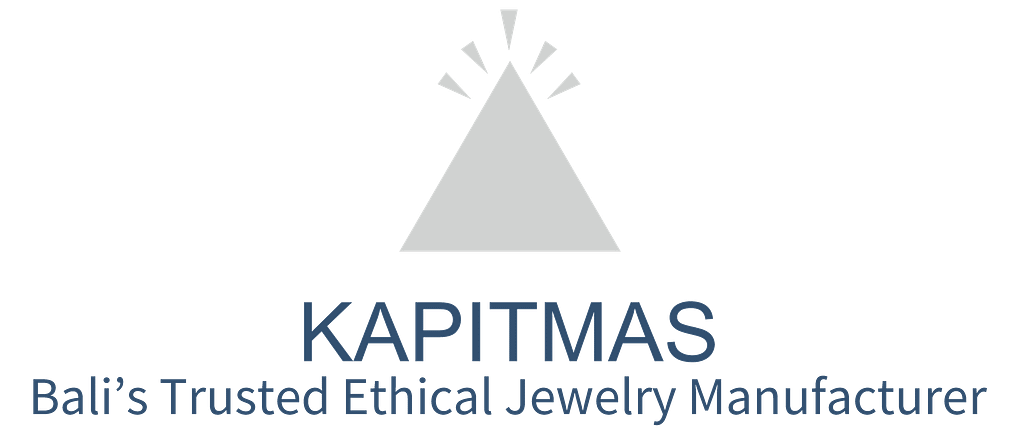FAQ Plating
Kapitmas provides Plating Jewelry services. The following is a short FAQ to help you understand better this production process. If you have any question, please feel free to contact us.

We usually plate the following metals: silver, gold, brass, bronze.
If you would like us to take care of your plating only, please note that:
- We need you to bring us finished items; plating is usually the last production step. Please note that soldering, tumbling,… can destroy your plating. If necessary, please ask us for advices regarding your production routing.
- We can’t plate on oxidized jewelry. The results would be of a poor quality. There are solutions but it needs to be discussed beforehand.
- You can close clasps, pins, and catches when you bring your jewelry to us, the plating process won’t stick both parts together.
- You can set your stones before plating. Except for Peridot, Coral, Shell, Pearl, Hematite, Lapis Lazuli, Malachite and Turquoise and a few other stones that can’t be plated. If you are unsure about any stones in your items please contact us for more information before making an order.
- In case you would like to glue some parts together during the assembly process, please plate your jewelry parts before the gluing process.
- Poor finishing or polishing will result in a bad plating result, porosity or scratches will be even more visible, and if the polishing is not satisfactory, the plating color might seem pale. We can help you with pre-plate finishing if required, please ask us about it. We cannot be responsible for poor plating results if the items presented to us for plating are not in a satisfactory condition.
This is the process of plating your jewelry with 2 different colors. For this purpose we plate your item with the first color and then need to do what we call “masking” on the parts that should keep the first color before doing the second plating process.
It is important to add a plated layer of metal on the top of your jewelry before gold plating. It prevents tarnishing, color migration, and extends the lifespan of the plating. At Kapit Mas, we use copper to create this layer of metal.
We provide nickel-free plating.
We have a wide range of plating options available:
- Gold 24K Micron Plating
- Gold 24K Flash
- Gold Hamilton 18K Flash
- 18K Pale Yellow
- Tiffany Rose Gold 14K Flash
- Silver
- White Rhodium
- Black Rhodium
- White Bronze (a cheaper Rhodium-like color alternative)
- Copper
The following coating options are available:
- Ceramic
- Black Ceramic
- Anti-Tarnish galvanic
The gold micron plating cost is directly linked with the surface area of the item and the thickness of plating requested. Our price is based on the actual weight of gold added onto your item.
Depending on the item, the minimum thickness recommended varies, but as a general rule we recomend:
- Earrings: 0.5 micron
- Pendants and Necklaces: 1 micron
- Rings and Bracelets: 2.5 microns
Kapit Mas can plate your chains whenever they are included in a necklace or pendant design. In order to ensure uniformity of color we strongly recommend you to plate pendants and chains with us at the same time.
